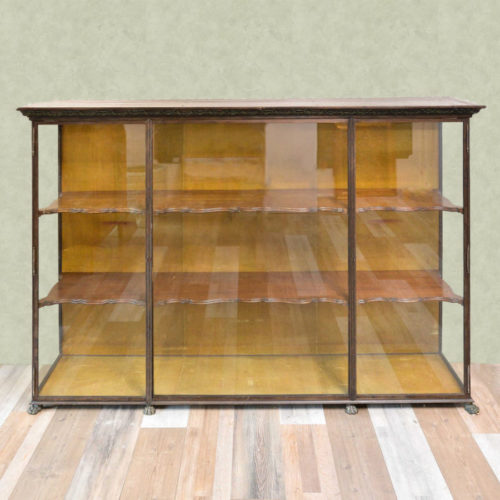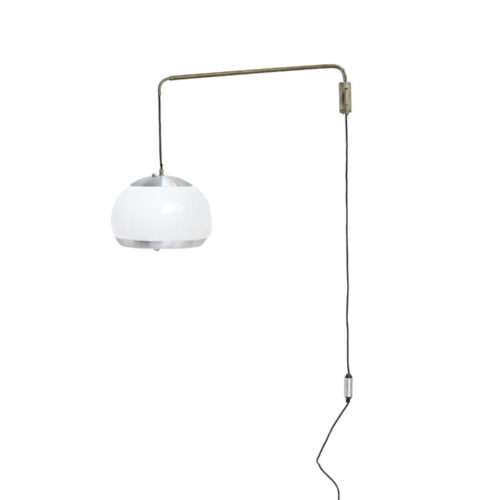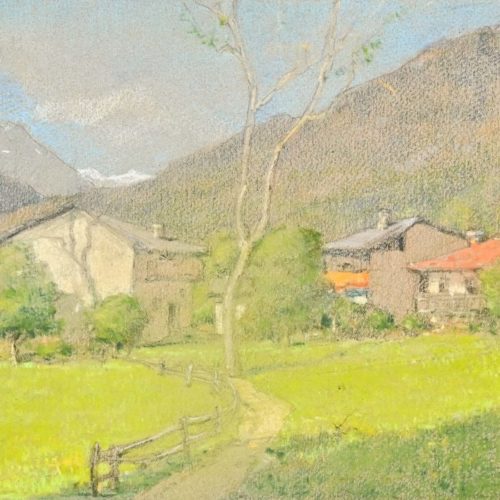-
Out of stock
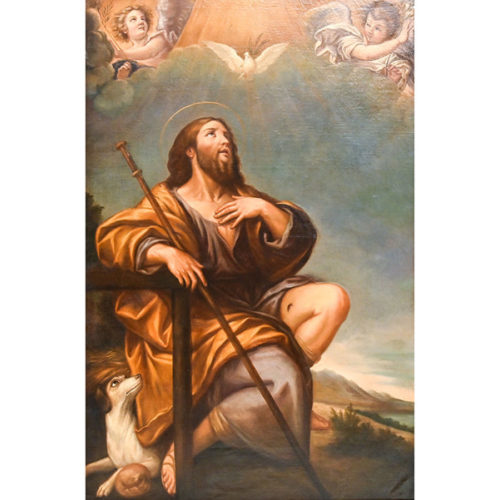 "San Rocco" oil on canvas from the 19th century. Large painting of the saint with dog, angels and the Easter dove. The painting is in excellent condition. San Rocco is invoked as protector from the plague and from great disasters, earthquakes, epidemics and very serious diseases; and it was a great example of human solidarity and Christian charity. Period: 19th century Measurements: In frame H 163 x W 112 x D 5 / Canvas H 153 x W 102 cm
"San Rocco" oil on canvas from the 19th century. Large painting of the saint with dog, angels and the Easter dove. The painting is in excellent condition. San Rocco is invoked as protector from the plague and from great disasters, earthquakes, epidemics and very serious diseases; and it was a great example of human solidarity and Christian charity. Period: 19th century Measurements: In frame H 163 x W 112 x D 5 / Canvas H 153 x W 102 cm -
Out of stock
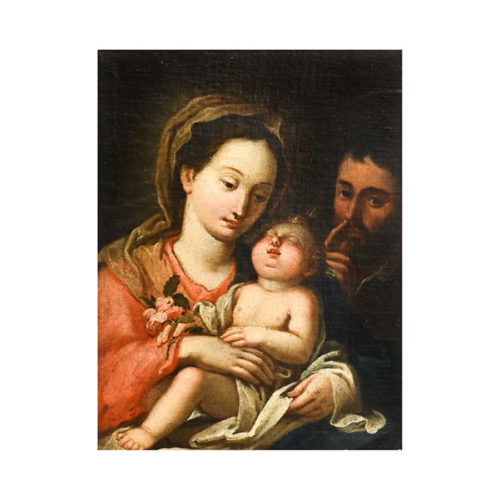 Holy Family, splendid high quality oil on canvas depicting the Madonna, Child and Saint Joseph, school painting between the 17th and 18th century. The condition is excellent, the pictorial surface does not require cleaning and has maintained its originality over time, coeval silver frame. Measurements: In frame H 70 x W 56 x P 6 / Canvas H 56 x W 41 cm
Holy Family, splendid high quality oil on canvas depicting the Madonna, Child and Saint Joseph, school painting between the 17th and 18th century. The condition is excellent, the pictorial surface does not require cleaning and has maintained its originality over time, coeval silver frame. Measurements: In frame H 70 x W 56 x P 6 / Canvas H 56 x W 41 cm -
Out of stock
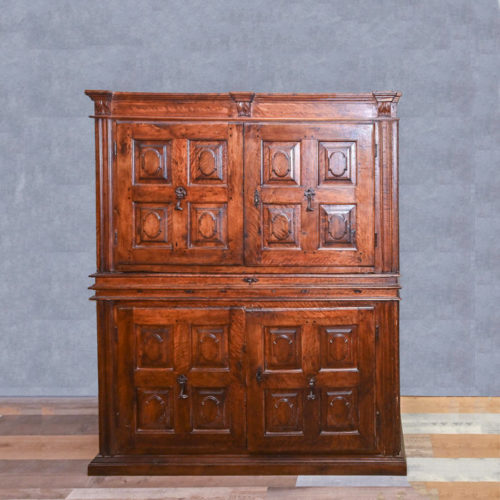 Double body in walnut, sacristy cabinet with four doors and a single central drawer, the doors are embellished with 4 ashlar panels and a wrought iron pendant in the center. The sides are also panelled. The cabinet has undergone to a small modification of the drawer and the band that rests on the ground, but overall it has been preserved as it was in its original form. Full period '600, Piedmont. Measurements: H 195 x W 160 x D 71.5 cm
Double body in walnut, sacristy cabinet with four doors and a single central drawer, the doors are embellished with 4 ashlar panels and a wrought iron pendant in the center. The sides are also panelled. The cabinet has undergone to a small modification of the drawer and the band that rests on the ground, but overall it has been preserved as it was in its original form. Full period '600, Piedmont. Measurements: H 195 x W 160 x D 71.5 cm -
Out of stock
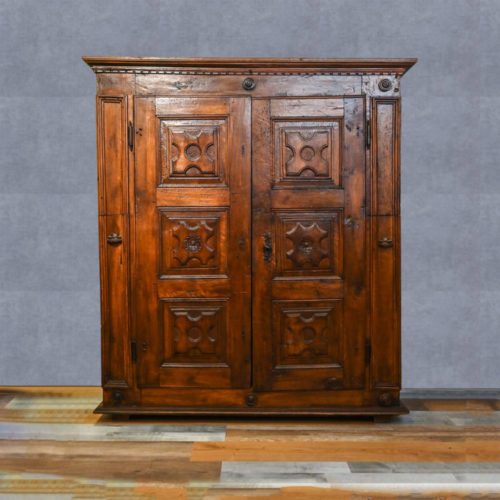 Piedmontese baroque cabinet in walnut, from the first half of the 18th century. Rebated doors with three carved panels each, smooth sides, the left one built in chestnut. Excellent condition, the piece of furniture was born as a single body and was subsequently cut in the middle to be easier to transport, a classic feature of antique Piedmontese furniture. Measurements: H 177 x W 147 x D 57,5 / Internal D 50 cm
Piedmontese baroque cabinet in walnut, from the first half of the 18th century. Rebated doors with three carved panels each, smooth sides, the left one built in chestnut. Excellent condition, the piece of furniture was born as a single body and was subsequently cut in the middle to be easier to transport, a classic feature of antique Piedmontese furniture. Measurements: H 177 x W 147 x D 57,5 / Internal D 50 cm -
Out of stock
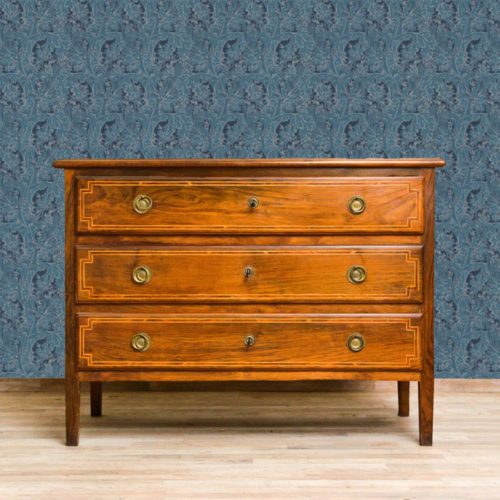 Directory chest of drawers with three drawers, Piedmontese origin, in walnut wood, late eighteenth century style. Threaded drawers in bois de rose and maple, truncated pyramidal legs. Invoice period about 1800. The chest of drawers is in excellent condition Period: late 18th century - early 19th century Measurements: H 91 X L 123 X P 55 cm
Directory chest of drawers with three drawers, Piedmontese origin, in walnut wood, late eighteenth century style. Threaded drawers in bois de rose and maple, truncated pyramidal legs. Invoice period about 1800. The chest of drawers is in excellent condition Period: late 18th century - early 19th century Measurements: H 91 X L 123 X P 55 cm -
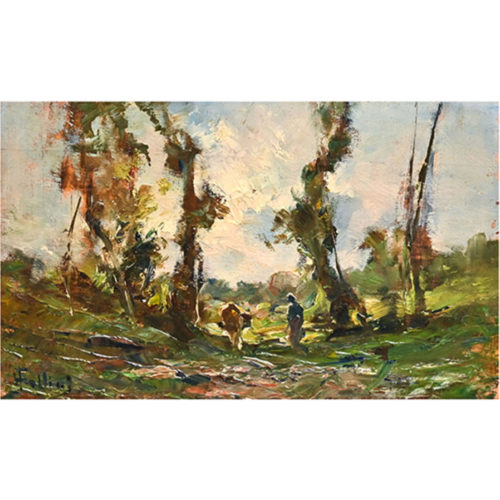 Oil on panel by Carlo Follini (1848-1938), depicting a landscape with figures, signed lower left. Carlo Follini (Domodossola 24 August 1848 - Pegli 6 March 1938). He studied at the Albertina Academy in Turin, a pupil of Fontanesi albeit at a little advanced age. He exhibited his first painting at the Turin Promoter; later took part in the exhibitions in Turin, Milan, Florence, Naples, Palermo, Munich, Paris, London, San Francisco and various others. Strong, skilled landscape painter, he portrayed, with great poetry, many views of the Alps and also executed marine. In the first part of his artistic activity he followed the ways of Fontanesi, later he was attracted a little by those of Segantini. Measurements: In frame H 45 x W 54.5 x D 4.5 / Table H 15 x W 24.5 cm
Oil on panel by Carlo Follini (1848-1938), depicting a landscape with figures, signed lower left. Carlo Follini (Domodossola 24 August 1848 - Pegli 6 March 1938). He studied at the Albertina Academy in Turin, a pupil of Fontanesi albeit at a little advanced age. He exhibited his first painting at the Turin Promoter; later took part in the exhibitions in Turin, Milan, Florence, Naples, Palermo, Munich, Paris, London, San Francisco and various others. Strong, skilled landscape painter, he portrayed, with great poetry, many views of the Alps and also executed marine. In the first part of his artistic activity he followed the ways of Fontanesi, later he was attracted a little by those of Segantini. Measurements: In frame H 45 x W 54.5 x D 4.5 / Table H 15 x W 24.5 cm -
Out of stock
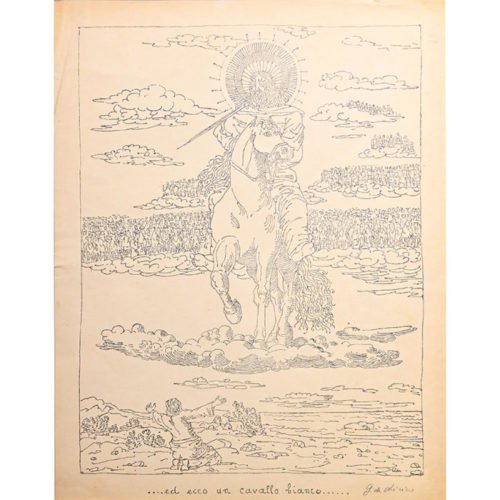 "Ed ecco un cavallo bianco (And finally a white horse)", a not numbered litograph, signed on the lower right by Giorgio De Chirico. This artwork is included in the "Apocalypse" volume, curated by R. Carrieri, Edizioni della Chimera, Milano. The founder of the metaphysical school, Giorgio de Chirico is mostly known for his metaphysical paintings, created from 1909 to 1919. These nostalgic representations have deeply influenced the Surrealist movement and its artists, among which André Breton, Salvador Dalì and René Magritte. De Chirico's artworks explore various themes, among which alientation; nostalgia and the myth. De Chirico refused, later in his career, his previous metaphysical style and focused his research on traditional painting techniques, preferring the neo-Classic and neo-Baroque style, influenced by Raffaello, Luca Signorelli and Peter Paul Rubens. The surrealists publicly criticised this further anti-moidernist development in De Chirico's work and for that the artist ceased his participation and belonging to the group. Measurements: In frame H53 x W45,5 x D1,5 cm / Litograph H32 x W25 cm.
"Ed ecco un cavallo bianco (And finally a white horse)", a not numbered litograph, signed on the lower right by Giorgio De Chirico. This artwork is included in the "Apocalypse" volume, curated by R. Carrieri, Edizioni della Chimera, Milano. The founder of the metaphysical school, Giorgio de Chirico is mostly known for his metaphysical paintings, created from 1909 to 1919. These nostalgic representations have deeply influenced the Surrealist movement and its artists, among which André Breton, Salvador Dalì and René Magritte. De Chirico's artworks explore various themes, among which alientation; nostalgia and the myth. De Chirico refused, later in his career, his previous metaphysical style and focused his research on traditional painting techniques, preferring the neo-Classic and neo-Baroque style, influenced by Raffaello, Luca Signorelli and Peter Paul Rubens. The surrealists publicly criticised this further anti-moidernist development in De Chirico's work and for that the artist ceased his participation and belonging to the group. Measurements: In frame H53 x W45,5 x D1,5 cm / Litograph H32 x W25 cm. -
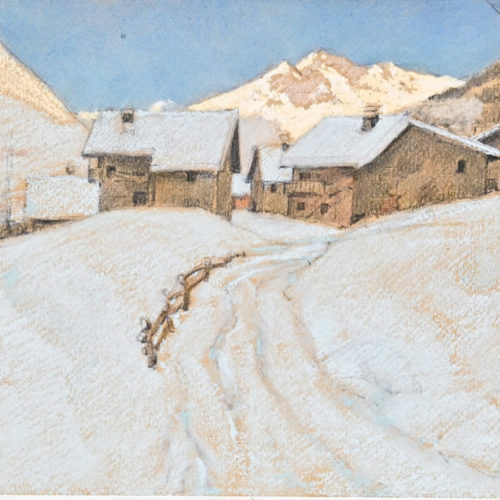 Carlo Musso (1907 - 1968), gracious chalk on paper by the Turinese artist. Signed on the lower right, dating back to the 1940s. Born on September 7th 1907 and dead on September 25th 1968 in Turin. He attended the Albertina Academy of Fine Arts along with the masters Luigi Onetti, Cesare Ferro and later on with Guido di Montezemolo. This last artist was his companion with whom he had learned to dig into the true soul of the Piedmontese landscapes, pictorically describing it with a deep sense of lyricism. He participated in the main Italian group exhibitions: Circolo degli Artisti, Arbarello prize with the work 'Ponte sulla Dora' (1946); CAI Award, silver medal with 'Preludio di tormenta' (1947); Black and White exhibition, medal of silver San Paolo with Strada del fortino (1952); City of Chieri competition, first prize with "the Duomo, evening" (1953); International Self-portrait Exhibition, silver medal (1956); Circolo degli Artisti of Turin, Follini prize with "Porto di Savonasotto la neve" (1958); Alessandria Commerce Award, first prize with "Casale Market" (1962); Pragelato Narcisi in fiore competition, first prize (1966); Exhibition of Floral compositions at Valentino, gold medal ( 1966); City of Cumiana painting exhibition, first prize and gold medal with "Autumn in Val di Susa" (1966) He has set up personal exhibitions in various Italian cities. Measurements: W 35 x H 22,5
Carlo Musso (1907 - 1968), gracious chalk on paper by the Turinese artist. Signed on the lower right, dating back to the 1940s. Born on September 7th 1907 and dead on September 25th 1968 in Turin. He attended the Albertina Academy of Fine Arts along with the masters Luigi Onetti, Cesare Ferro and later on with Guido di Montezemolo. This last artist was his companion with whom he had learned to dig into the true soul of the Piedmontese landscapes, pictorically describing it with a deep sense of lyricism. He participated in the main Italian group exhibitions: Circolo degli Artisti, Arbarello prize with the work 'Ponte sulla Dora' (1946); CAI Award, silver medal with 'Preludio di tormenta' (1947); Black and White exhibition, medal of silver San Paolo with Strada del fortino (1952); City of Chieri competition, first prize with "the Duomo, evening" (1953); International Self-portrait Exhibition, silver medal (1956); Circolo degli Artisti of Turin, Follini prize with "Porto di Savonasotto la neve" (1958); Alessandria Commerce Award, first prize with "Casale Market" (1962); Pragelato Narcisi in fiore competition, first prize (1966); Exhibition of Floral compositions at Valentino, gold medal ( 1966); City of Cumiana painting exhibition, first prize and gold medal with "Autumn in Val di Susa" (1966) He has set up personal exhibitions in various Italian cities. Measurements: W 35 x H 22,5 -
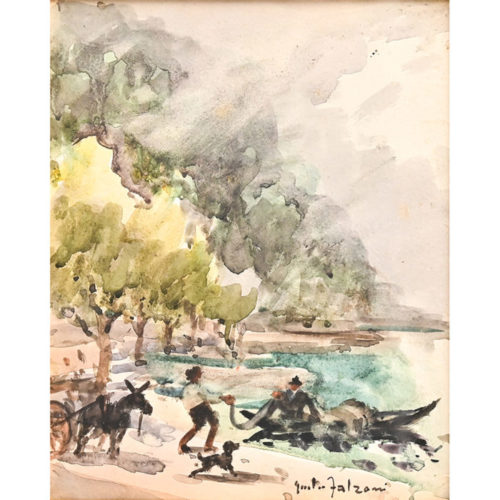 Watercolour on paper by Giulio Falzoni, signed on the lower right. Giulio Falzoni (Marmirolo, June 1st 1900 - Milano, 1978). In his youth he studied music and painting, specifically dedicating his work and research towards mural painting. In 1915 he started studying drawing in Mantova and the following year he worked as decorator. From 1928 to 1943 he stayed in Florence, where he attended the Academy of Fine Arts and developped his artistic skills under the lead of Plinio Nomellini. He started to stand out from his contemporary colleagues thanks to his watercolour technique, mastering it in London at the Royal Watercolour Society in the end of the 1940s. His first solo exhibition was set up in 1939 in Mantova, then Florence, Padova, Prato, Neaples, Venice and Milan followed. Some of his exhibitions have taken place in the United States of America, United Kingdom, France and Switzerland. Several prestigious collections see his works as their part, as for instance the Galleria degli Uffizi and Musei Capitolini. Measurements: In frame H56 x W49,5 x D4,5 // H32 x W26 cm.
Watercolour on paper by Giulio Falzoni, signed on the lower right. Giulio Falzoni (Marmirolo, June 1st 1900 - Milano, 1978). In his youth he studied music and painting, specifically dedicating his work and research towards mural painting. In 1915 he started studying drawing in Mantova and the following year he worked as decorator. From 1928 to 1943 he stayed in Florence, where he attended the Academy of Fine Arts and developped his artistic skills under the lead of Plinio Nomellini. He started to stand out from his contemporary colleagues thanks to his watercolour technique, mastering it in London at the Royal Watercolour Society in the end of the 1940s. His first solo exhibition was set up in 1939 in Mantova, then Florence, Padova, Prato, Neaples, Venice and Milan followed. Some of his exhibitions have taken place in the United States of America, United Kingdom, France and Switzerland. Several prestigious collections see his works as their part, as for instance the Galleria degli Uffizi and Musei Capitolini. Measurements: In frame H56 x W49,5 x D4,5 // H32 x W26 cm.
